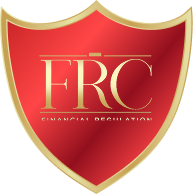The circular economy is a transformative approach to economic growth that focuses on minimising waste, reducing resource consumption, and keeping materials in use for as long as possible. It contrasts with the traditional linear economy, which follows a "take, make, dispose" model. As the world grapples with resource scarcity, climate change, and environmental degradation, transitioning to a circular economy has become a priority for governments, businesses, and investors alike.
Investment banks are playing an increasingly important role in promoting circular economy financing by developing innovative financial instruments, advising clients on sustainable strategies, and helping corporations and investors align with circular economy principles. This article explores how investment banks facilitate the transition to a circular economy and the strategies they use to promote circular economy financing.
Circular economy financing refers to the provision of capital for projects, companies, and initiatives that promote the principles of a circular economy. This type of financing focuses on supporting businesses that minimise waste, promote resource efficiency, and implement sustainable business models that prioritise long-term environmental and economic benefits.
Key areas of circular economy financing include:
Recycling and waste management: Funding for companies that recycle materials, reduce waste, and create products that can be reused or repurposed.
Resource efficiency: Investments in businesses that optimise resource use, reduce energy consumption, and minimise environmental impact.
Product life cycle extension: Financing for companies that design products with longer life cycles, allowing for repair, refurbishment, and remanufacturing.
Sustainable supply chains: Capital for businesses that adopt sustainable sourcing practices and create closed-loop supply chains that reduce reliance on virgin materials.
Promoting the circular economy through investment is essential for several reasons:
Global demand for resources such as metals, fossil fuels, and water continues to rise, putting pressure on natural ecosystems and supply chains. Circular economy financing supports companies that are finding ways to reuse materials and reduce the need for virgin resources, helping to alleviate resource scarcity.
Example: A company that recycles electronic waste, recovering valuable metals for reuse in new products, could receive financing to scale its operations, reducing the need for mining new materials.
The circular economy is essential for mitigating climate change, reducing pollution, and conserving biodiversity. By financing companies that adopt circular economy principles, investment banks help reduce carbon emissions, limit waste production, and promote the sustainable use of natural resources.
Best Practice: Investment banks should prioritise financing for projects that have a measurable positive environmental impact, such as reducing plastic waste or lowering greenhouse gas emissions.
Circular economy business models often deliver long-term financial benefits by reducing input costs, creating new revenue streams through recycling and reuse, and building more resilient supply chains. Investment banks can help businesses realise these benefits by providing capital and strategic advice to support their circular economy initiatives.
Example: A manufacturer that designs modular, easily repairable products can extend the life of its goods, reducing costs and attracting customers who value sustainability.
Investment banks play a critical role in promoting circular economy financing by structuring innovative financial products, offering advisory services, and connecting businesses with capital that aligns with circular economy principles.
Investment banks are increasingly involved in structuring green bonds and circular economy bonds that raise capital specifically for projects that promote resource efficiency, waste reduction, and sustainability. These bonds provide investors with an opportunity to finance companies that are driving the transition to a circular economy.
Green bonds: These bonds are issued to finance projects with positive environmental outcomes, including those that promote circular economy initiatives such as waste management and resource efficiency.
Circular economy bonds: A more specific subset of green bonds, circular economy bonds are designed to raise capital for businesses that align with circular economy principles, such as recycling companies or manufacturers of sustainable products.
Best Practice: Banks should structure circular economy bonds with clear reporting and transparency standards, ensuring that investors can track the environmental and financial performance of the projects they are supporting.
Example: An investment bank may structure a green bond for a company that manufactures products from recycled plastics, ensuring that the bond’s proceeds are used to expand the company’s recycling infrastructure.
Investment banks provide ESG advisory services that help businesses integrate circular economy principles into their strategies. These services include advising on how to design products for circularity, optimise resource use, and create closed-loop supply chains that reduce waste and improve sustainability.
Best Practice: Banks should work closely with corporate clients to assess their ESG risks and opportunities, helping them develop circular economy business models that reduce environmental impact and enhance long-term value creation.
Example: A bank may advise a consumer goods company on how to transition to a circular economy model by redesigning its packaging to be fully recyclable and introducing take-back programmes that allow customers to return products for reuse or recycling.
Investment banks are also involved in creating circular economy-focused investment funds that provide capital to businesses driving the transition to a circular economy. These funds target companies across various sectors, including manufacturing, technology, and retail, that are committed to reducing waste and promoting resource efficiency.
Circular economy funds: These funds invest in companies that are leading the way in circular economy practices, such as recycling, sustainable product design, and resource efficiency.
Sustainable infrastructure funds: Investment banks also offer funds that finance infrastructure projects that promote circular economy principles, such as waste-to-energy plants, water recycling facilities, and renewable energy projects.
Best Practice: Investment banks should design circular economy funds with a clear focus on sustainability metrics, ensuring that the companies and projects they invest in are making measurable progress toward circularity.
Example: A circular economy fund may invest in a start-up that designs modular furniture, allowing customers to replace parts and extend the product’s life cycle rather than buying new furniture.
Investment banks are increasingly involved in mergers and acquisitions (M&A) that promote the circular economy. This includes advising companies on acquiring businesses that enhance their circular economy capabilities, such as recycling firms or suppliers of sustainable materials.
Best Practice: Banks should help companies identify acquisition targets that align with their circular economy goals, ensuring that the acquisition strengthens the company’s sustainability credentials and improves its resource efficiency.
Example: An investment bank may advise a manufacturing company on acquiring a recycling firm that can supply it with high-quality recycled materials, reducing the company’s dependence on virgin resources.
Impact investors are increasingly focused on funding businesses that contribute to the circular economy. Investment banks play a key role in connecting these investors with companies that are driving innovation in resource efficiency, waste reduction, and product design.
Best Practice: Investment banks should build strong networks of impact investors who prioritise circular economy projects, helping companies raise capital from investors who are committed to sustainability and long-term value creation.
Example: A bank may facilitate a partnership between an impact investor and a start-up that develops technology for turning food waste into bioenergy, providing both the capital and expertise needed to scale the company’s operations.
Financing the circular economy offers several benefits for both investors and businesses:
The transition to a circular economy creates new business opportunities, from recycling and waste management to sustainable product design and resource efficiency. By financing circular economy initiatives, investors can gain access to new growth sectors and support businesses that are innovating in sustainability.
Circular economy business models are often more resilient to economic and environmental shocks. By reducing reliance on virgin materials, companies can protect themselves from supply chain disruptions, price volatility, and regulatory changes related to environmental sustainability.
Investors are increasingly seeking out opportunities that align with their sustainability goals. Circular economy financing provides investors with a way to support businesses that prioritise resource efficiency and waste reduction, helping them meet their ESG investment objectives.
Despite the benefits, promoting circular economy financing comes with several challenges:
One of the key challenges is the lack of standardisation in how circular economy initiatives are measured and reported. This can make it difficult for investors to assess the environmental impact of circular economy projects and ensure that they are meeting their sustainability goals.
Solution: Investment banks should work with companies to adopt globally recognised reporting frameworks, such as the Global Reporting Initiative (GRI) or the Sustainability Accounting Standards Board (SASB), to ensure consistency and transparency in circular economy reporting.
Many circular economy projects require significant upfront investment, particularly in infrastructure and technology. This can be a barrier for some companies, especially small and medium-sized enterprises (SMEs), that lack access to capital.
Solution: Investment banks can help businesses access capital through green bonds, circular economy funds, and partnerships with impact investors, providing the financial support needed to scale their circular economy initiatives.
Investment banks are essential to promoting circular economy financing, helping businesses transition to sustainable business models that prioritise resource efficiency, waste reduction, and long-term value creation. Through green bonds, ESG advisory services, and circular economy funds, banks are providing the capital and strategic support needed to drive the transition to a more sustainable economy.
For professionals seeking to deepen their understanding of how circular economy financing can drive sustainable growth, the Professional ESG Advisor Certificate from Financial Regulation Courses offers valuable insights into the tools and strategies used to promote circular economy initiatives through investment banking.
Discover how investment banks are promoting circular economy financing with the ESG Advisor Certification. Learn more through Benzinga.
Be the first to know about new class launches and announcements.


Financial writer and analyst Ron Finely shows you how to navigate financial markets, manage investments, and build wealth through strategic decision-making.
